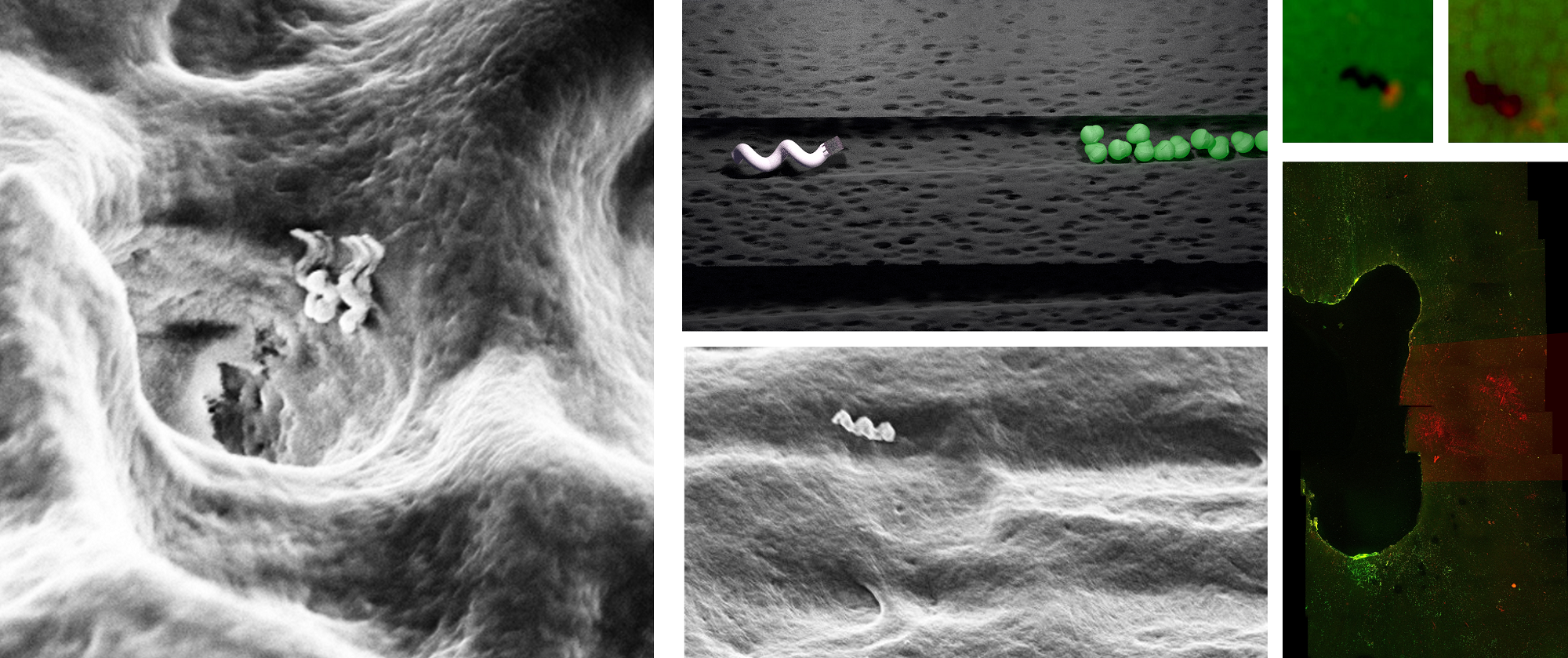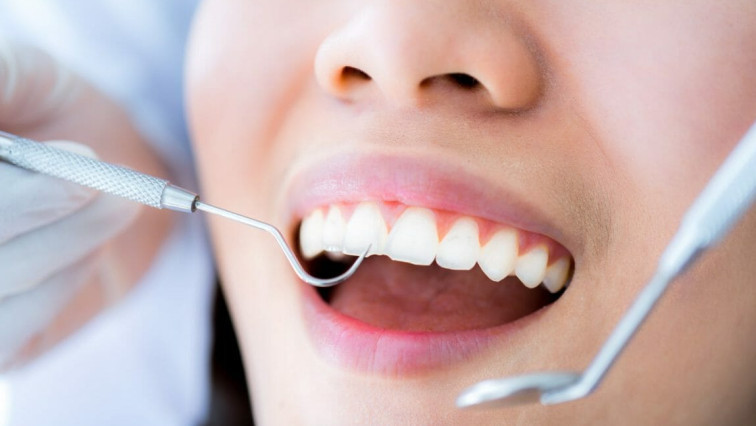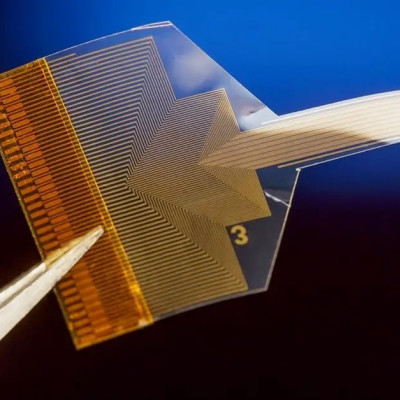Root canal treatments are routinely carried out to treat tooth infections in millions of patients. The procedure involves removing the infected soft tissue inside the tooth, called the pulp, and flushing the tooth with antibiotics or chemicals to kill the bacteria that cause the infection. But many times, the treatment fails to completely remove all the bacteria – especially antibiotic-resistant bacteria such as Enterococcus faecalis – which remain hidden inside microscopic canals in the tooth called dentinal tubules.
“The dentinal tubules are very small, and bacteria reside deep in the tissue. Current techniques are not efficient enough to go all the way inside and kill the bacteria,” explains Shanmukh Srinivas, Research Associate at the Centre for Nano Science and Engineering (CeNSE), IISc, and co-founder of Theranautilus.
In the study published in Advanced Healthcare Materials, the researchers designed helical nanobots made of silicon dioxide coated with iron, which can be controlled using a device that generates a low intensity magnetic field. These nanobots were then injected into extracted tooth samples and their movement was tracked using a microscope.
By tweaking the frequency of the magnetic field, the researchers were able to make the nanobots move at will, and penetrate deep inside the dentinal tubules. “We have also established that we can retrieve them … we can pull them back out of the patient’s teeth,” says Srinivas.
Crucially, the team was able to manipulate the magnetic field to make the surface of the nanobots generate heat, which can kill the bacteria nearby. “No other technology in the market can do this right now,” says Debayan Dasgupta, Research Associate at CeNSE, and another co-founder of Theranautilus.

Left: Nanobots entering a dentinal tubule. Centre top and bottom: Schematic representation and electron microscope image of nanobot moving through dentinal tubule to reach bacterial colony. Right: How locally induced heat from nanobot can kill bacteria. Live bacteria are green and dead bacteria are red. Bottom right shows band where targeted treatment has been done in human teeth.
Previously, scientists have used ultrasound or laser pulses to create shockwaves in the fluid used to flush out bacteria and tissue debris, in order to improve the efficiency of root canal treatment. But these pulses can only penetrate up to a distance of 800 micrometers, and their energy dissipates fast. The nanobots were able to penetrate much further – up to 2,000 micrometers. Using heat to kill the bacteria also provides a safer alternative to harsh chemicals or antibiotics, the researchers say.
Theranautilus was spun out of several years of work on magnetically-controlled nanoparticles carried out in the lab of Ambarish Ghosh, Professor at CeNSE. His group, along with collaborators, has previously shown that such nanoparticles can trap and move objects using light, swim through blood and inside living cells, and stick strongly to cancer cells. “These studies have shown that they are safe to use in biological tissues,” says Dasgupta.
The team has tested the dental nanobots in mice models and found them to be safe and effective. They are also working on developing a new kind of medical device that can easily fit inside the mouth, and allow the dentist to inject and manipulate the nanobots inside the teeth during root canal treatment.
“We are very close to deploying this technology in a clinical setting, which was considered futuristic even three years ago,” says Ghosh. “It is a joy to see how a simple scientific curiosity is shaping into a medical intervention that can impact millions of people in India alone.”
Read the original article on Indian Institute of Science.







